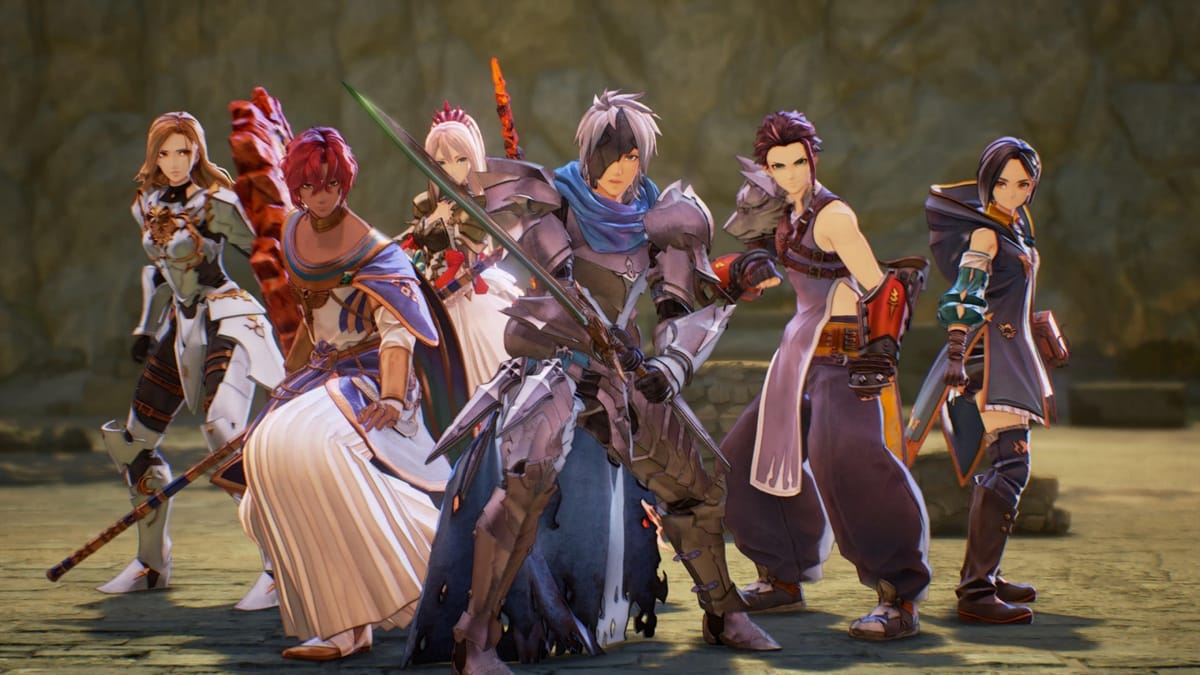
300 years ago, the Renans invaded the world of Dahna. Dividing the planet into five realms, each lord put their Dahnan slaves to work harvesting Astral Energy in a twisted game called the Crown Contest. Held every ten years, whoever collects the most of their element will become the next Sovereign of Rena. The slaves, considered subhuman, live in squalor and are worked to death, any signs of resistance quickly crushed. When a Reanan woman suddenly appears to oppose Calaglia’s lord, a slave known only as Iron Mask sets off on a journey to liberate Dahna, recover his memories, and discover why he can’t feel pain.
The Tales of series has never been as well known or acclaimed as other franchises like Final Fantasy, but it occupies a similar space in my heart. Each entry presents a new world with new characters, but with familiar gameplay elements and overall vibes to keep things consistent. While Final Fantasy has reinvented itself with each entry, Tales has remained relatively stable, at least until 2015’s Tales of Zestiria. After the Xillia duology, it was clear the fighting game-esque combat had reached a point where it was becoming difficult to innovate, so they moved the camera behind the back instead of the side and returned to a more medieval setting, trying to return to the series’ roots while building further on what came before. It’s certainly not an awful game, but far from the heights of Symphonia and Vesperia. After that, Berseria completely reworked the combat system and aimed for a much darker story about vengeance. It was also still fun, and up there with the best Tales has to offer in my opinion, but was mechanically too dense while being shallow enough that players could just mash their way to victory.
Enter Tales of Arise. Arise feels like the culmination of the entire series up to this point. The combat plays much more like a character action game like Astral Chain, while retaining what made previous games so fun. It takes the darker tone that was popular in the west, and mixes it with the positivity and hope that’s always been the core of these games’ stories. Arise brings the series into the future, and that future looks oh so bright.
Tales of Arise boasts a drop dead gorgeous visual style with bright colors and subtle black outlines that makes environments look like concept art from a distance. The realms you’ll be liberating all possess unique themes that make them stand out even if they follow the elemental trends of fire, earth, water, etc. The rocky Calaglia is often literally on fire, while the plains of Ganath Haros are flooded with the region’s abundance of water. The character designs are likewise varied while conveying typical RPG archetypes like the Knight, Healer, and Mage. The protagonist, who we learn is called Alphen once his mask breaks early in the game, begins with ragged slave garbs, but eventually dons the black armor of an ancient Dahnan hero to become a symbol for his people along with the Blazing Sword he wields. The young spell caster Rinwell honestly looks like a cutesy take on the robbed black mage, showing that while she has a feminine demeanor there hides a seething rage and discontent under the surface. Everyone who joins your party, along with the villains and a few important NPCs, have been designed with care to reflect their personalities. I only wish that every party member got a third act costume change like Alphen and Shionne, though from that point on the story places far more focus on our two leads.
Speaking of, while the final hours of Arise’s story can be a bit convoluted and typical of an RPG, everything leading up to that is one of the best plots the genre has to offer in recent memory in a year full of excellent RPGs. Tales has always had great characters, and that remains true here, but the game tackles the concept of slavery with surprising nuance. I’m not sure I’m the best person to talk about it considering I’m white, so seek out people of color’s opinions on the game, but at the very least I found it to be a deeper exploration of the theme of rebellion than Persona 5 (which was barely about the concept, but I digress). The last stretch isn’t bad, and it’s well foreshadowed throughout, though everything leading up to that point made this new direction feel less interesting by comparison. Without spoiling anything, you’ll feel like you’re coming close to the end when the game just keeps going for about 10 more hours. While I would have preferred a slightly shorter and tighter story, I can’t deny that spending more time with these characters was a delight even if they became a little more cliche and delved slightly into the gender essentialism (women are like this, men are like that, etc.) that has sadly been pervasive in the franchise.
The music is a different story. While there are a few standouts, like the battle theme, opening, Blue Moon, and some environment tracks, I found it to be largely forgettable. It feels like the soundtrack stayed behind while the rest of the game moved forward, because a lot of the songs are just generic fantasy tunes with a choir that don’t sit perfectly with the more bold direction. While the main battle theme is excellent, you hardly ever hear it since each chapter has a unique theme to go along with it. On top of that, the music in battles is difficult to make out in and of itself since it’s so low in the mix even if you turn it up along with the constant screaming out of attacks from your party that people either tolerate or hate in these kinds of games. Honestly, I hope it gets patched to be louder so I can go back through the game with new game plus and see if there are any other standout songs I just couldn’t hear properly.
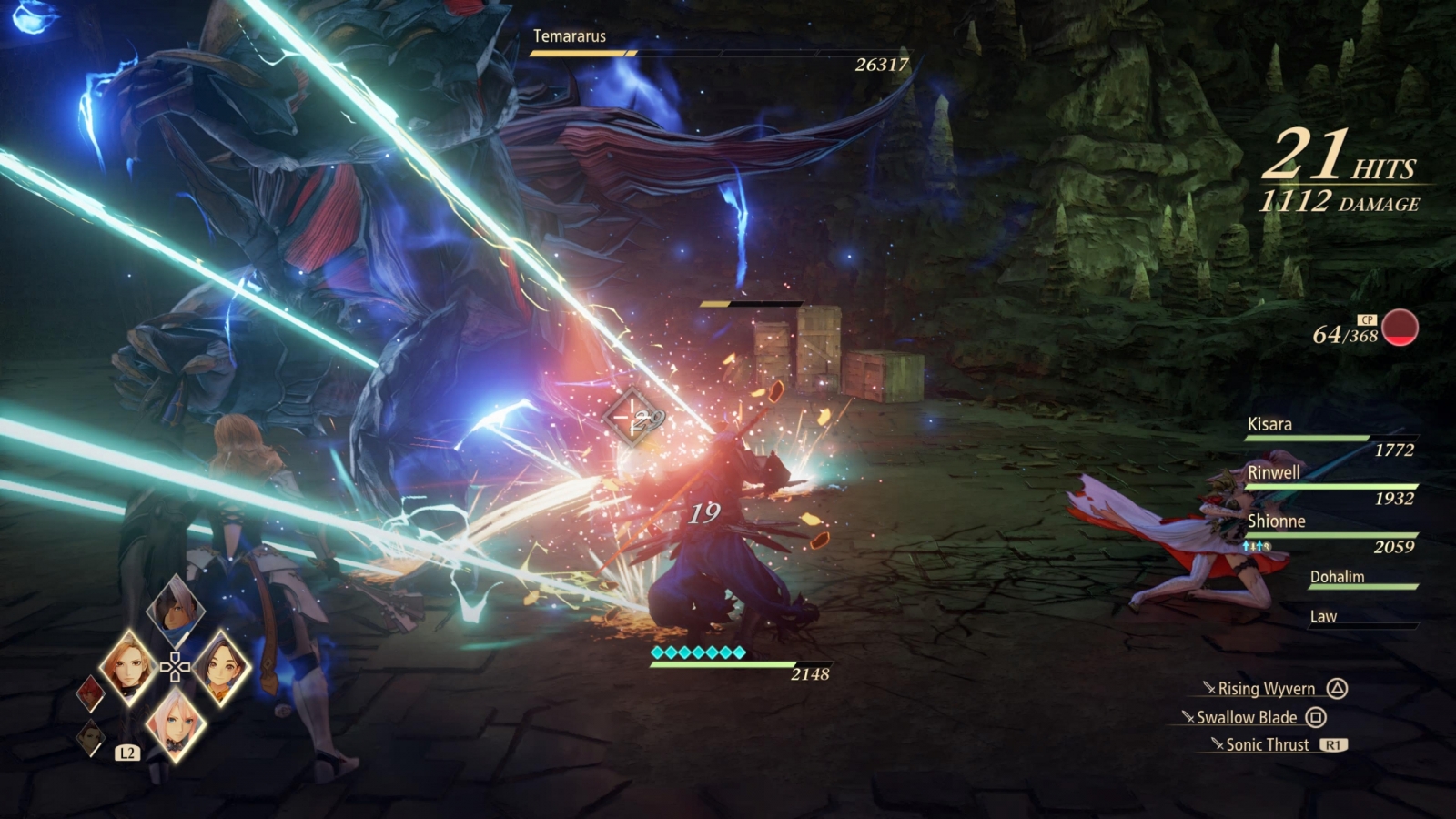
The game has a few technical problems as well, at least in the PS5 version. You can choose from graphical (30 fps) and performance (60 fps) modes which both look and run fine, but as you explore the pop in of some objects can be very distracting. It’s not as pronounced as the demo, but still very noticeable especially when running through an area dense with NPCs or, oddly enough, moving the camera around when fishing. I opted for a console since Bandai Namco isn’t known for their quality PC ports, but we’ll have to see how that fares once the game is released. Aside from that though, the game looks and runs perfectly on PS5.
Performance is key when it comes to action games, and Tales of Arise is no exception. Combat is faster and more frenetic than ever, but that’s what makes it consistently engaging and, most importantly, fun. After running into an enemy on the field, you fight that group of monsters (called Zeugles) in a circular arena. You can perform a combo of normal attacks with the attack button (by default R1, but I swapped it with X), jump with circle, dodge with R2, and unleash moves called Artes with three other buttons. Attacking normally keeps your combo going at no cost, while Artes use up your Artes Gauge (AG) represented by blue diamonds just above your health bar. You can’t attack infinitely (for now) so you need to mix both artes and normal attacks to deal as much damage as you can in a combo.
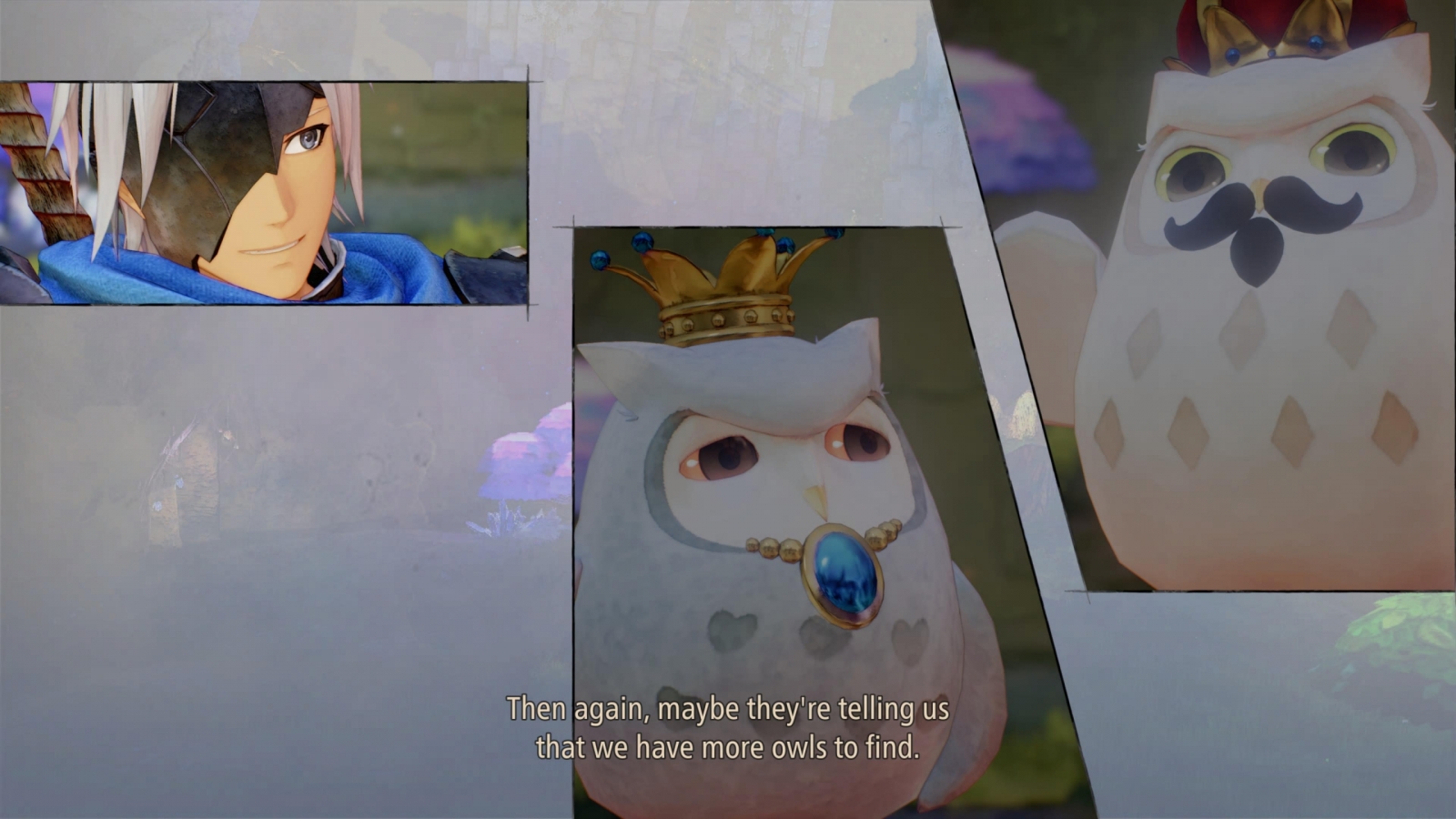
Those are just the basics though, and you’ll find you’re not very effective simply attacking over and over. To counter specific types of attacks, each character has a Boost Arte used by pressing the corresponding portrait with the D-Pad. For example, Law can break enemy shields, Dohalim can stop foes from dodging, and Shionne can knock flyers to the ground with her gun. Teamwork is key as well, since keeping up the assault on an enemy long enough will fill up a blue meter around the target allowing you to team up with a party member and instantly kill any foe.
As you fight, your team will be taking damage frequently, especially if Alphen makes liberal use of the Blazing Sword, which can deal huge damage at the expense of HP. Using artes to heal consumes Cure Points (CP), which can only be replenished by resting or with certain items. While you have a very limited amount of CP, you can increase it by defeating unique Zeugles or leveling up. Any sort of MP is absent, so this limits how much you can fight before you need to rest. Resting in a camp allows you to cook food, which grants buffs over a period of time, and chat with your party (which we’ll talk about in a bit).
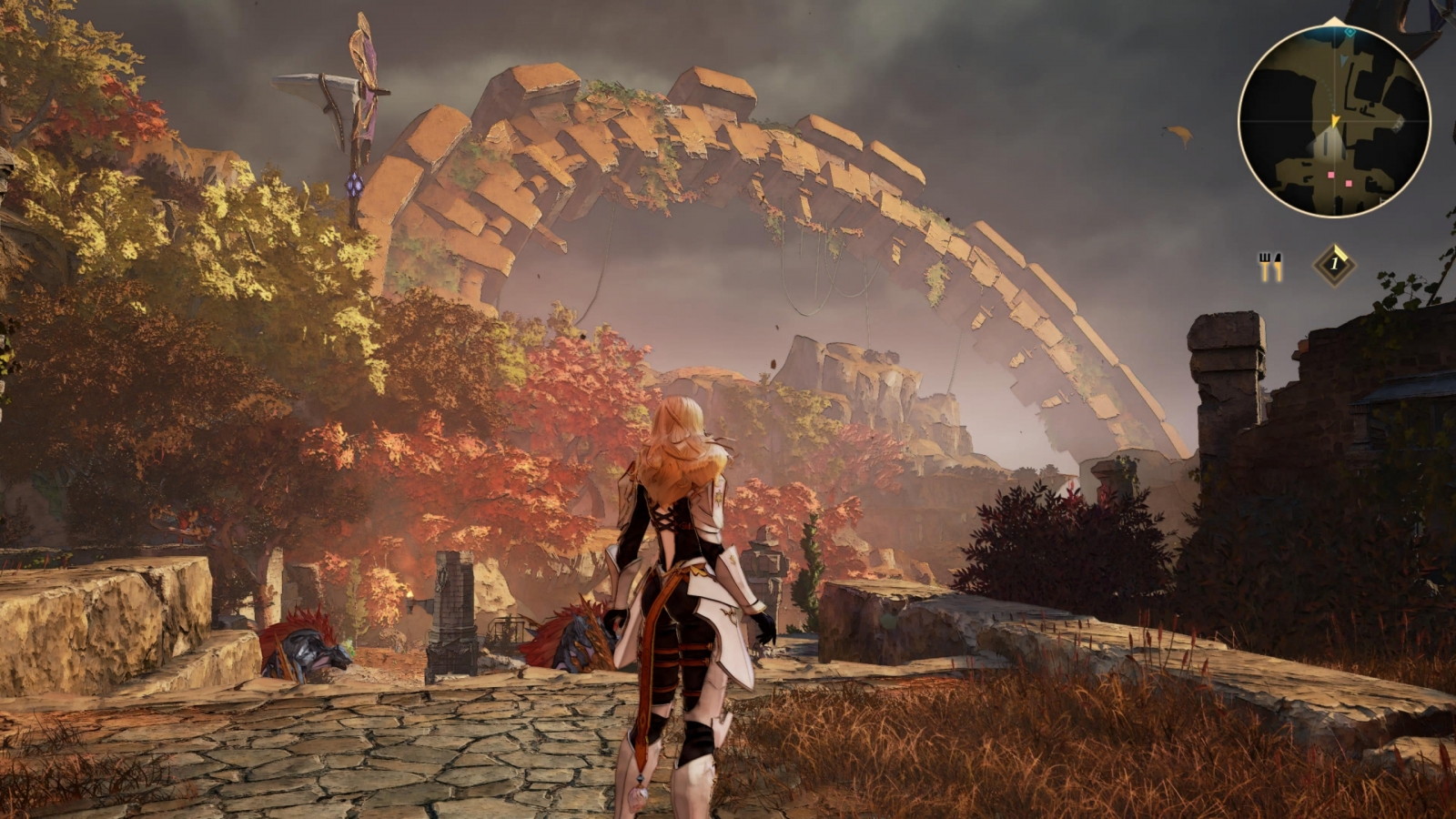
Each character has skill panels which are acquired when you gain a new title. Each node you purchase with SP grants that character a permanent buff, ability, or new arte. These abilities can be anything from a double jump to a teleporting counter after a perfect dodge. If this all sounds a bit complicated, mechanics are introduced gradually throughout the first half of the game so you have time to acclimate to each before the next comes up. By the end of the game, you’ll be chaining together combos with powerful artes while dodging and countering attacks with ease. It’s a ton of fun while remaining challenging throughout.
There are a few instances where that challenge can feel a bit unfair though. About halfway through the game, Gald suddenly becomes very hard to come by, which means you can’t forge new weapons or purchase items and armor to keep up with the far stronger enemies. After that difficulty spike, it’s smooth sailing until the last dungeon, where Zeugles are suddenly 10 levels higher than you. While I refrained from using any of the DLC items that were included with the ultimate edition (I also played on Moderate, which is just above Normal), it was here that I caved and enabled the +20% EXP artifact to get this review done on time. You do have access to endgame side quests by this point, but they also require a significantly higher level. It’s a bit annoying to have required grinding in a game that flowed so well up to this point.
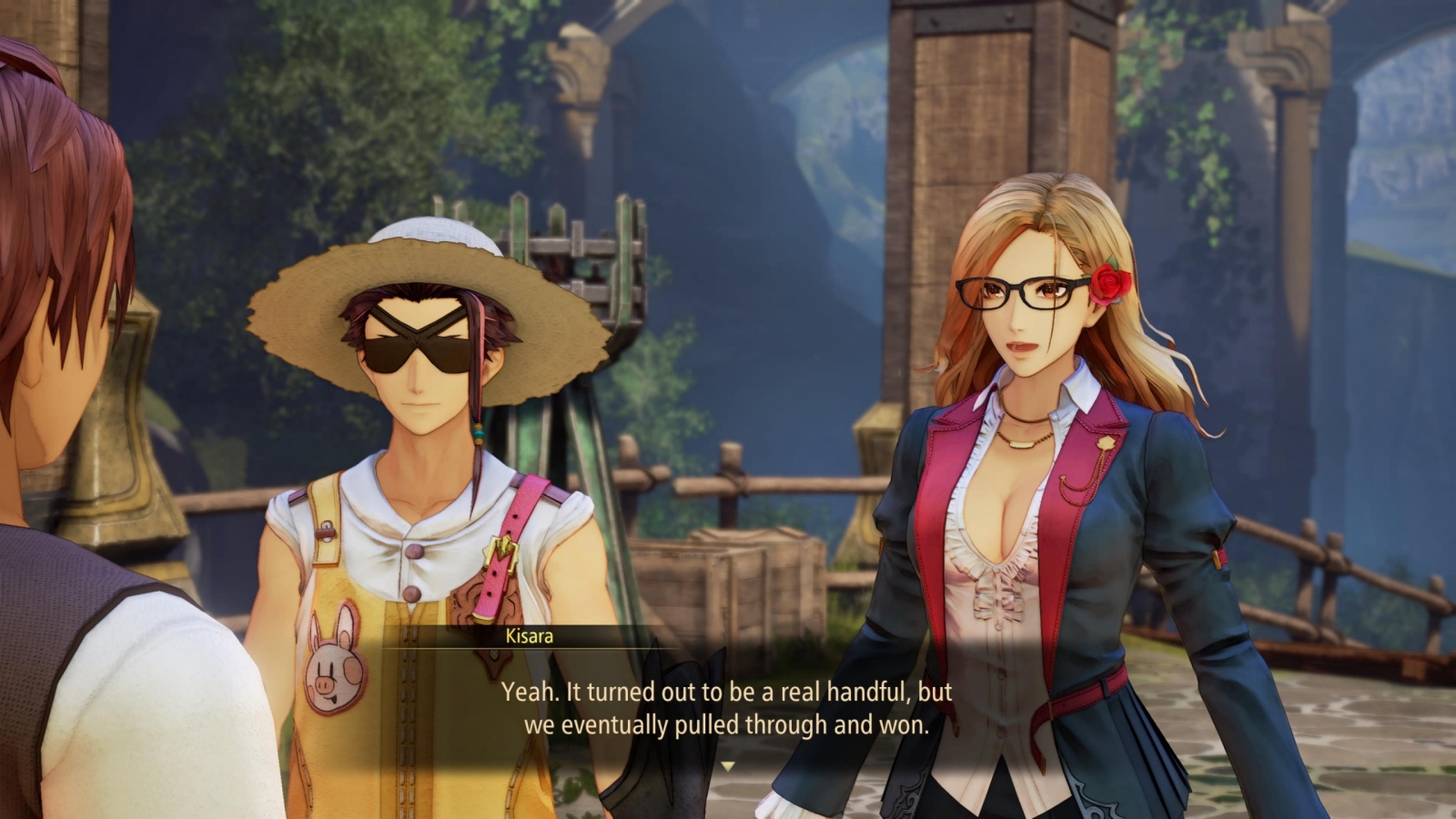
Circling back to chatting with your party, the Tales of series is known for Skits – small, comic book-like cutscenes in which characters will talk about… whatever. It could be whatever just happened in the story, what they ate for dinner last night, or a Zeugle that looks particularly cute. They’re fully voiced and pop up very frequently even when just walking around. Instead of the 2D portraits of the past, Skits in Arise use the ingame models for more dynamic panels. While I like being able to see outfits I’ve put together from pieces given to you by adorable owls you find in the field, the animations look incredibly stiff compared to normal cutscenes. So much so that I think they would actually look better if they weren’t ever so slightly animated.
Tales of Arise
Excellent
Tales of Arise is a huge leap forward for the series. Combat is incredibly fun and fluid, the story is fantastic despite a lackluster finale, and the characters are as charming as ever. It’s not only one of the best Tales games, but one of the best the PS5 has to offer.
Pros
- Combat feels great
- Excellent story and characters
- Beautiful visuals
- Huge amount of side content
Cons
- Last few hours feel cliche
- Pop in issues
- Skits look stiff
- Subtitles can be inaccurate
